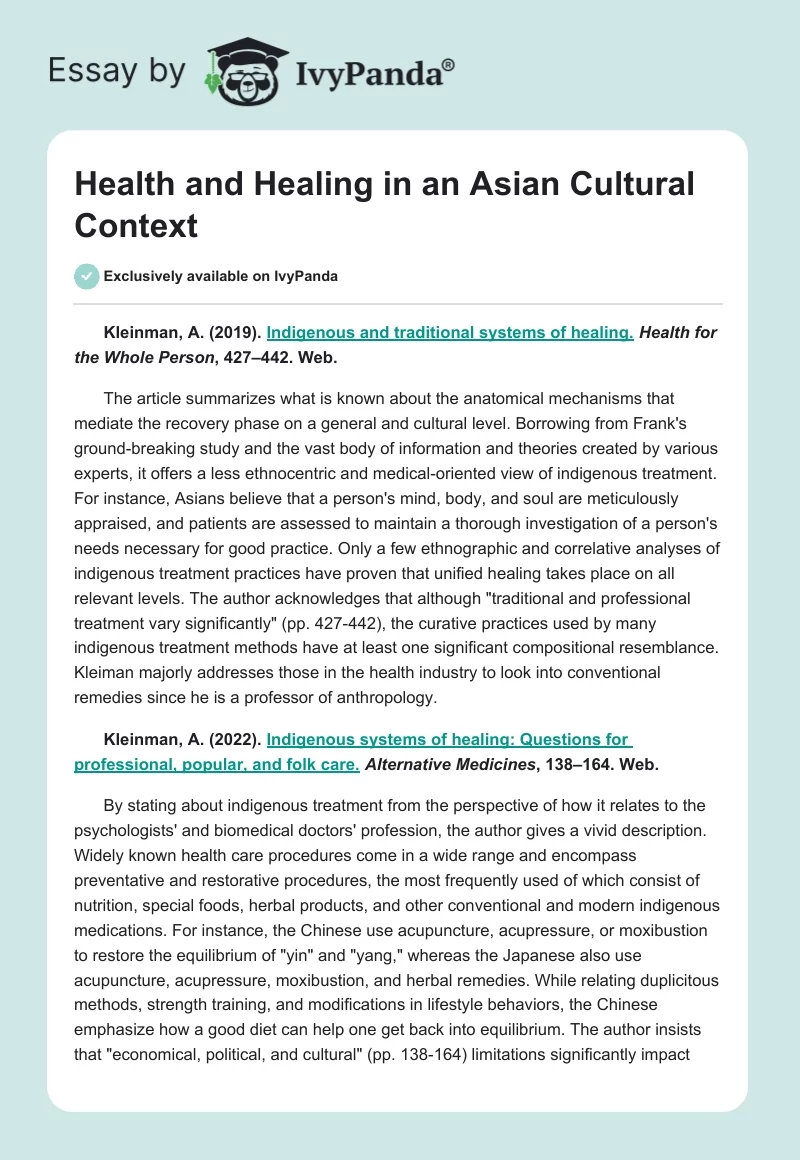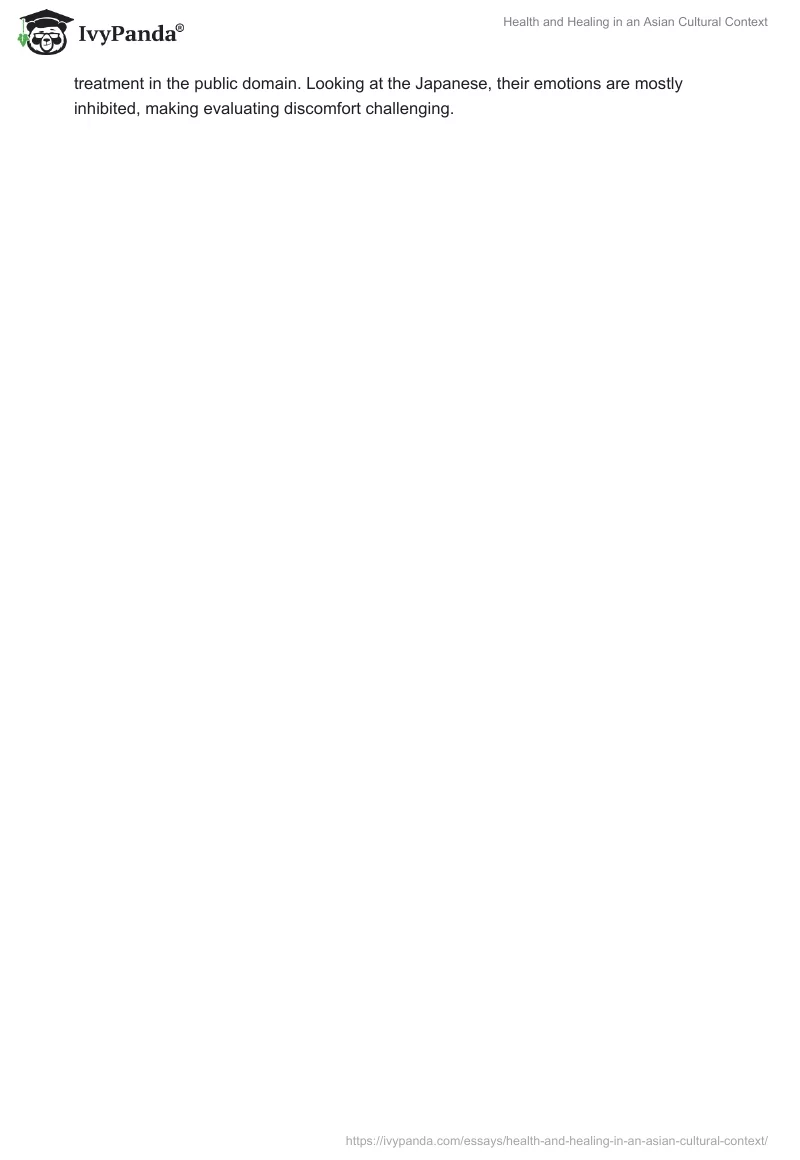Kleinman, A. (2019). Indigenous and traditional systems of healing.Health for the Whole Person, 427–442. Web.
The article summarizes what is known about the anatomical mechanisms that mediate the recovery phase on a general and cultural level. Borrowing from Frank’s ground-breaking study and the vast body of information and theories created by various experts, it offers a less ethnocentric and medical-oriented view of indigenous treatment. For instance, Asians believe that a person’s mind, body, and soul are meticulously appraised, and patients are assessed to maintain a thorough investigation of a person’s needs necessary for good practice.
Only a few ethnographic and correlative analyses of indigenous treatment practices have proven that unified healing takes place on all relevant levels. The author acknowledges that although “traditional and professional treatment vary significantly” (pp. 427-442), the curative practices used by many indigenous treatment methods have at least one significant compositional resemblance. Kleiman majorly addresses those in the health industry to look into conventional remedies since he is a professor of anthropology.
Kleinman, A. (2022). Indigenous systems of healing: Questions for professional, popular, and folk care.Alternative Medicines, 138–164. Web.
By stating about indigenous treatment from the perspective of how it relates to the psychologists’ and biomedical doctors’ profession, the author gives a vivid description. Widely known health care procedures come in a wide range and encompass preventative and restorative procedures, the most frequently used of which consist of nutrition, special foods, herbal products, and other conventional and modern indigenous medications. For instance, the Chinese use acupuncture, acupressure, or moxibustion to restore the equilibrium of “yin” and “yang,” whereas the Japanese also use acupuncture, acupressure, moxibustion, and herbal remedies.
While relating duplicitous methods, strength training, and modifications in lifestyle behaviors, the Chinese emphasize how a good diet can help one get back into equilibrium. The author insists that “economical, political, and cultural” (pp. 138-164) limitations significantly impact treatment in the public domain. Looking at the Japanese, their emotions are mostly inhibited, making evaluating discomfort challenging.


